
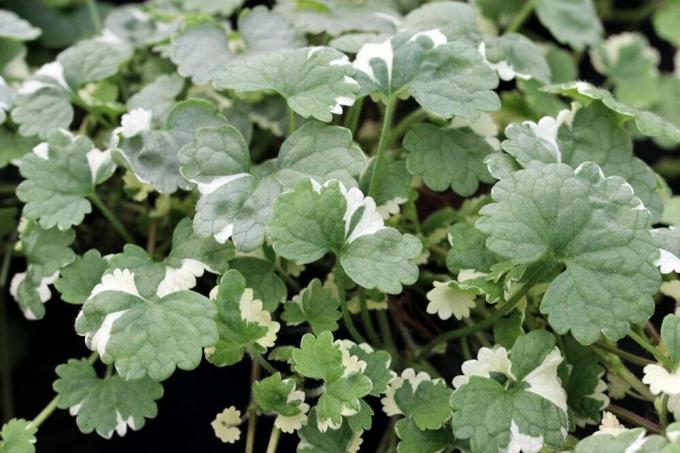
Table of contents
- Recognize
- Happen
- Manual combat
- hand removal
- weeder
- Mechanical combat
- scarify
- lawn fertilization
- weed killer
- prevention
- lawn cuttings
- lawn clippings
- turf control
- Conclusion
Once the ground ivy, also known as the real ground ivy, has moved into the garden, it quickly spreads in all directions and also takes over the lawn. Here it not only spoils the well-groomed appearance, but also seriously damages the lawn if it is not removed quickly. That is why you should react quickly. As a weed, Glechoma hederacea is very stubborn and resists many methods of control. But below you will find out which effective strategies and preventive measures offer the solution to the weed problem.
Recognize
If you have not intentionally planted this mint species as a ground cover in the garden, you should before everyone Fighting weeds on the lawn knowing exactly which plant is involved in order to take the right measures to be able to You can recognize the Gundermann by the following appearance:
- Stems and undersides of leaves often have purple undersides
- Stem axes that run across the ground and do not have flowers
- Flowers only on the ascending stems
- Blue-purple flowers are up to about 1.5 centimeters in size
- Soil suckers have a few nodes that root
- Reaches a lateral length of over two meters
- Possible height growth of about 30 centimeters
- Kidney-shaped to rounded-heart-shaped leaves with a maximum length of four centimeters
- Blunt or pointed leaf ends
- Nutty fruits ripening between June and August
- Flowering period: between April and July
- Special feature: when a leaf is crushed, an oily film and a spicy-tart smell are produced
Happen
The real gondola vine is sometimes planted as a ground cover, but it often moves into the gardens through wild propagation. The seeds are mainly carried by the wind and birds in the neighborhood. But they also stick under shoes and get onto the lawn in particular. Above all, light, nitrogenous, moist lawns are preferred.
As they spread quickly and grow stronger and wider through their nodal rooting, they overrun Lawns right down to the flower beds, at swimming pools set into the lawn and also in front of terraces bordering on the lawn not standing. Removing them there is of no use, because here the point of origin and all the branches in the lawn that emanate from it must be found. This is the only way to stop further proliferation.
Manual combat
It is very difficult to pull out ground ivy if it has already taken root at various nodes and is spreading in all directions. For this reason, you should regularly check your lawn for ground ivy at short intervals. This is the only way you can spot a plant in the lawn at an early stage and remove it before the shoots and seeds continue to form.
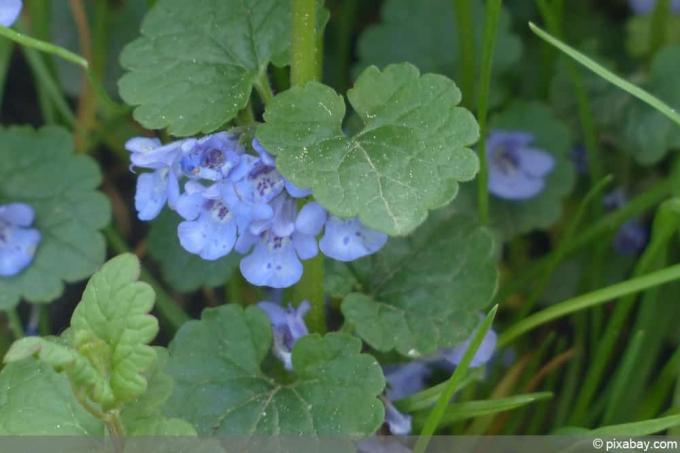
hand removal
If the real gondola vine has just emerged, it can usually be easily pulled out of the lawn. In order to be able to pull out the root completely in this way, the soil should be wet. Manual removal of specimens that have already been driven out is much more complex. While the hand method can also work here, it may involve scanning the lawn for rooted knots while crouching for a few feet.
weeder
The Glechoma hederacea is one of the flat-rooted plants, which is why it can be easily pulled out with a special weed puller and the root. The advantage over manual removal is that you don't have to bend down and thus protect your back.
Tip:
If you have grown the plant completely and want to dispose of it on the compost, it is advisable to let the roots dry out completely on a stone or similar in direct sunlight. If you don't do this, there is a chance that the root will sprout again on the compost and grow rampant again.
Mechanical combat
Some mechanical control methods with the support of various tools are not necessarily more convenient or faster, but just as effective.
scarify
For growth and budding, ground ivy seeds need light, among other things. It therefore has fewer chances of germinating between compacted lawns and of being able to fully develop even as a young plant. For this reason, you should theoretically not scarify - BUT compacted lawn offers for many other types of weeds provide an optimal basis and ultimately damage the lawn both visually and in terms of health instance. It is therefore advisable to scarify the lawn, especially where it is heavily compacted. In the gardening season, twice are usually sufficient. You should then scatter new lawn seeds to fill gaps and thus achieve a natural lawn density. This also limits seed germination and growth.
lawn fertilization
True gondolas require nitrogenous soil for their existence, as does lawns. If you have discovered the plant in your lawn, it is necessary to forgo nitrogenous fertilizers. This may result in your lawn losing a rich green colour, but the ground ivy will be prevented from spreading and will slowly die off. Then you can spread a fertilizer with nitrogen on your lawn that works quickly. For example, ammonium, nitrate, and urea are forms of nitrogen that have fast-acting effects. The lawn will recover fairly quickly afterwards.
However, you can also fertilize your lawn with natural fertilizer during the nitrogen withdrawal. This allows it to survive this low-nitrogen phase better.
weed killer
Be careful when buying weed killers. Many products contain substances that even promote the growth of dicotyledonous plants such as ground ivy. It is strongly advised to pay close attention to the product descriptions and, if necessary, seek professional advice.
This applies not only to combating in the lawn, but also to the use of normal weeds in beds that are directly adjacent to the lawn and in which Glechoma hederacea is located. With a growth-promoting weed killer, there is a good chance that you will lose control and the ground ivy from the bed will spread rapidly across the lawn.
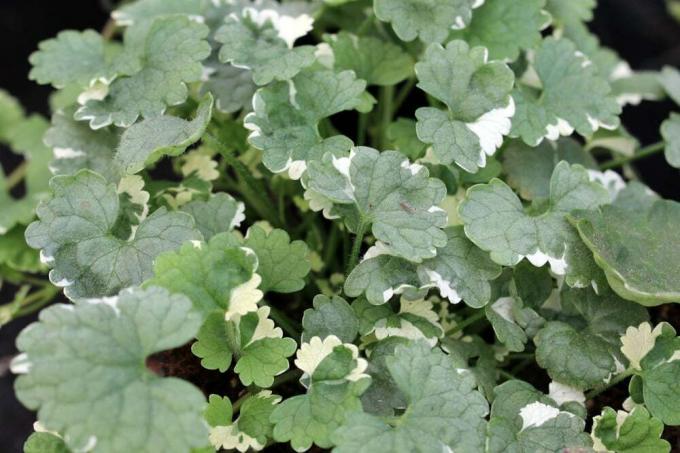
We only recommend using a special weed killer for the lawn, which is designed for dicotyledonous plants. Here, however, you should make sure that they are not used too close to a bed, where the plant acts as a ground cover. The distance should be at least one meter and overwetting of the soil should be avoided so that the weed killer does not reach too large an area. In addition, it should be evenly distributed along the entire ground rungs so as not to miss a root point. It is usually only possible to overseed the lawn two months after one application.
prevention
As a preventive measure, basically nothing really helps reliably. You can maximally reduce the chance of germination and spread.
lawn cuttings
Cut your lawn regularly and keep it at a height of between four and five centimeters. Seeds that have already penetrated receive less or no light at all and are prevented from germinating. Regular lawn cutting also ensures a stronger blade of grass and dense growth, so that it is more difficult for seeds or the roots arising from them to get into the soil reach.
In addition, continuous lawn cutting reduces the nitrogen content in the soil, as this every cut the lawn absorbs to grow and accordingly less available in the ground stands. This means that an important soil property that the ground ivy needs to grow is missing.
lawn clippings
After each lawn mowing, remove the lawn clippings completely from the surface. This will compost after a while, especially if there is adequate moisture. When lying down, it can secrete nitrogen and increase the nitrogen content in the soil again.
turf control
The best time to check the lawn is when you are cutting the lawn. Walk across the lawn surface with your eyes open and watch out for the first signs of ground ivy. This allows you to spot the fast growing plant and remove it at an early stage of growth.
Conclusion
Scarifying the lawn is one way to combat ground ivy. But here it is important to ensure that a maximum number of twice is not exceeded, so as not to create a more favorable situation for the plant. With the other methods as described here, you will achieve effective results, which then permanently ensure a lawn without a real ground ivy if you see it quickly when you first see it use.
 garden editorial
garden editorial I write about everything that interests me in my garden.
Learn more about weed control

Combat field horsetail - this is how you destroy it permanently
The field horsetail is a dreadful terror for many gardeners because it spreads quickly and can infest large areas. In addition, the weeds can only be controlled with great effort and are relatively difficult to remove permanently.

Fight stinging nettles - this is how you destroy nettles permanently
With their vehement urge to spread and painful stinging hairs, stinging nettles spread fear and terror in the garden. So that the weeds in the bed do not develop from extras to protagonists, they should be fought at an early stage. This guide explains the best strategies to get rid of nettles permanently.
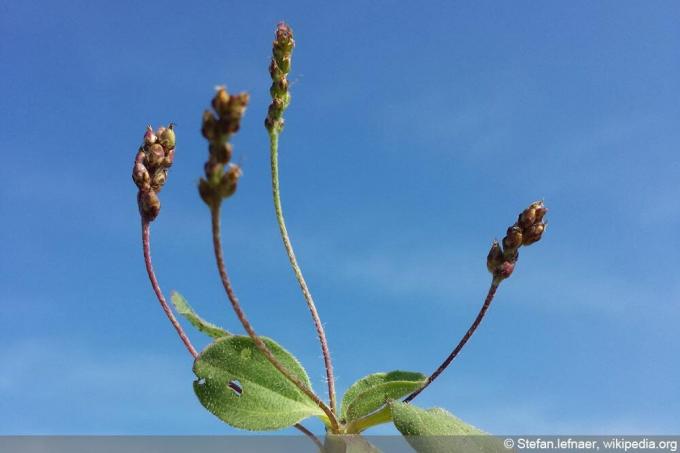
Combat plantain - combat weeds
Although plantain is known as a medicinal plant, it is very unpopular as a weed in well-tended gardens. It spreads rapidly, and there is suppression of shallow-rooted plants and grasses. With the right approach, plantain can be permanently removed in a number of ways. The home garden guide explains how to do this.
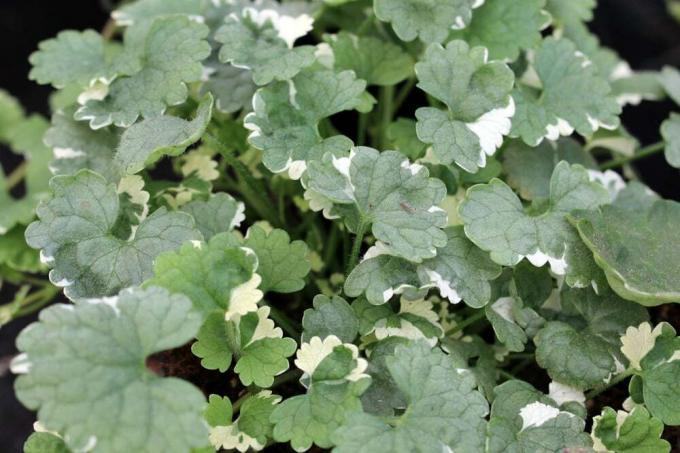
Fight ground ivy in the lawn - this is how you get rid of the weeds
Gundel vine is one of the many weeds that are unpopular among lawn owners. The inconspicuous plant with the pretty purple flowers can quickly become a nuisance if it is allowed to spread unhindered. Fighting them is not that easy. You can find out here how to combat ground ivy in the lawn.
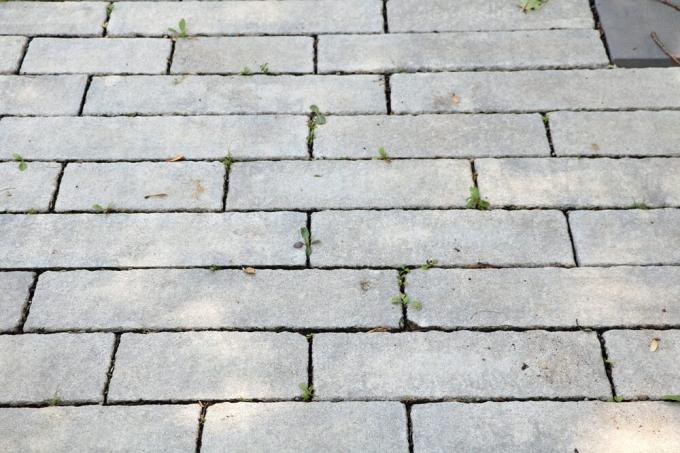
Weeds in paving stone joints – 12 effective weed killers
While weeds are welcome in an overgrown garden, among paving stones it creates an unsightly and unkempt sight. There are some effective ways to kill weeds, but the law does not allow them to be used on all paved surfaces. The professional home garden guide provides information and lists effective weed killers.
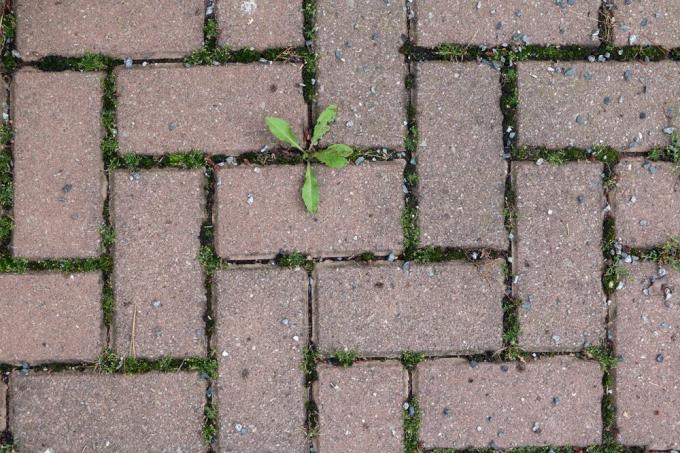
Burning weeds properly - is burning forbidden?
One of the most environmentally friendly methods of destroying unwanted weeds is scorching. Since the use of chemical weed killers is prohibited on paths and paving stones, flaming is particularly suitable here. You can find out here how you can burn weeds quickly and efficiently in the future.
